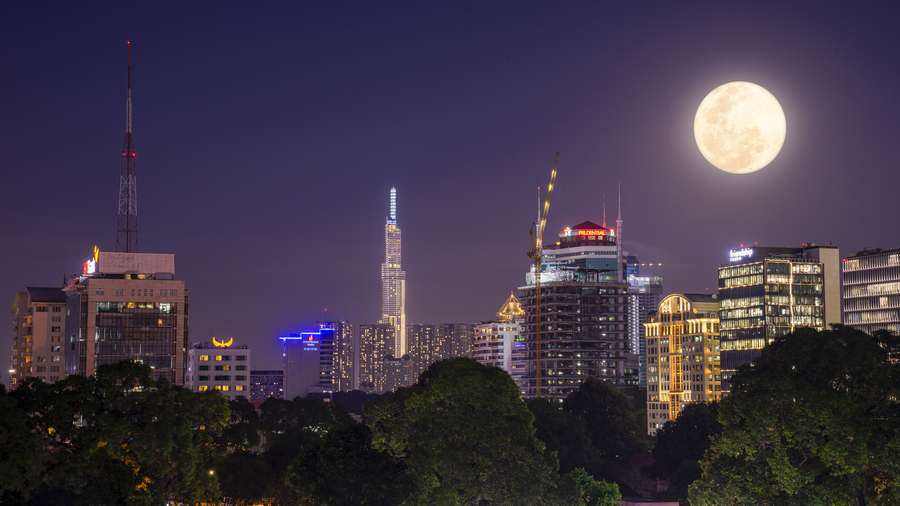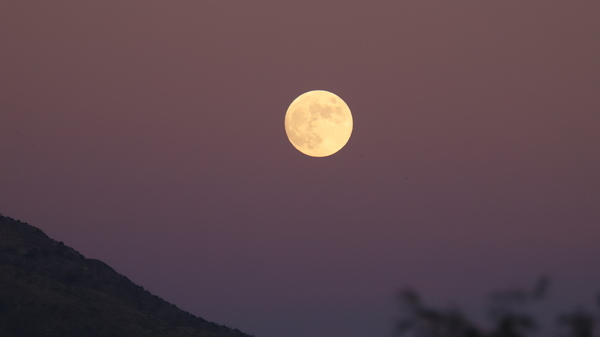
Wouldn’t it be interesting to find a list of all holidays under a Full Moon* in 2025? It might give you a reason to celebrate your favorite holiday bathed in silver light, with a dinner or an evening walk. But where to find such a list?
All you need is a database of international holidays and a service that shows you all Moon phases for every location on Earth.
Luckily, timeanddate.com offers both accurate holiday and astronomic data. We checked it out for you and looked at all the holidays, observances, and commemorations around the world that coincide with a Moon that is at least 98% lit up.
We like to call these special days Full Moon holidays. Let’s have a look at some of the lunar highlights of the 2025 holiday calendar.
In the Moonlight: Lovers, Mothers, Presidents
In 2025, a bright Moon shines on 486 holidays and observances around the world. You’ll find a longer list at the end of this article; here are three of our favorite Full Moon holidays this year.
1. Valentine’s Day in New Zealand (February 14, 2025)
Romance shines even brighter this Valentine’s Day in New Zealand, as couples celebrate under a Full Moon. Many take advantage of the Southern Hemisphere’s summer warmth, making the most of the magical moonlit evening. Illumination: 99.0%
2. Thomas Jefferson’s Birthday in the US (April 13, 2025)
While the third US president and principal author of the Declaration of Independence did not receive a federal holiday, he will have a Full Moon shining on his 282nd birthday. And Jefferson is not the only President with a Full Moon birthday: Abraham Lincoln’s birthday (February 12) is bathed in bright moonlight this year as well. Illumination: 99.9%
3. Mothers’ Day in Puerto Rico (May 11, 2025)
Families in Puerto Rico celebrate Mothers’ Day with heartfelt gatherings, delicious home-cooked meals, and expressions of gratitude for maternal love and care. Many enjoy outdoor festivities, from beach picnics to moonlit serenades, making this year’s moonlit celebration even more special. Illumination: 99.6%
Full Moon Holidays: Accident or Design?
How rare are holidays that fall on a Full Moon? We had a closer look at our holiday database and found that in 2025, only 486 out of 6990 holidays in the timeanddate.com database fall on a Full Moon (6.95%). The majority of these are what we call accidental Full Moon holidays.
An accidental Full Moon holiday is a holiday or observance with a fixed date, such as Election Day (USA), that happens to coincide with a brightly illuminated Moon in a given year.
Explore our holiday databaseDesigned Full Moon Holidays
Not all Full Moon holidays are accidents: Roughly every third holiday in our database falls on a Full Moon date every year. No wonder, because many religions celebrate important days by following the Moon’s phases: Christians set the date for Easter using the Full Moon in spring, Jewish holidays often start on a Full Moon, and Islamic months start when the Moon becomes visible again after a New Moon.
Chuseok: The Full Moon traffic chaos holidayFull Moon Holidays 2025

*Full Moon Illumination: What Does “Full” Mean?
As described above, for the purpose of finding holidays basked in moonlight, we define a Full Moon as at least 98% illuminated. But our article about the Full Moon phase explains that “the Full Moon is when the Sun and the Moon are aligned on opposite sides of Earth, and approximately 100% of the Moon’s face is illuminated by the Sun.” So, which one is it?
Can the Moon really be called full when it is less than 100% illuminated?
The answer is yes. In effect, astronomers already allow for a slight deviation of 0.2%, so a Moon with 99.8% illumination does not lose its status as a Full Moon. So it doesn’t have to be 100%. But how much lower than 99.8% can we go and still call it a Full Moon?
What are astronomical holidays?This is where we leave the accuracy of calculations and touch the realm of our senses: The human eye can’t easily detect a difference between a Moon that is 98% illuminated and one that is 100% lit up. In practice, they look the same.
In other words, for a human watching from Earth, an illumination of 98% looks like a Full Moon.
This is why we talk about “holidays under a Full Moon” with some additional explanation. It is the intersection of science and culture, of measurement and experience. There is a little wiggle room.

